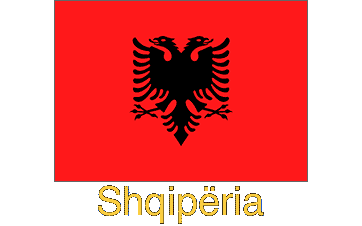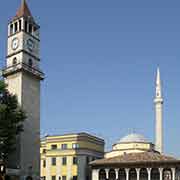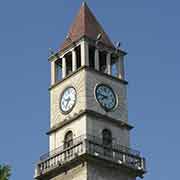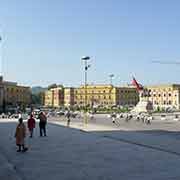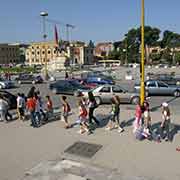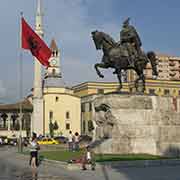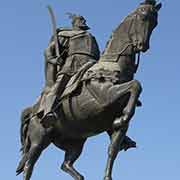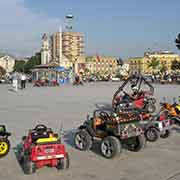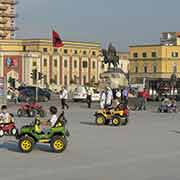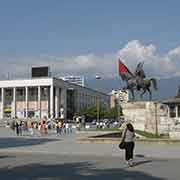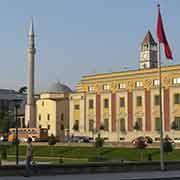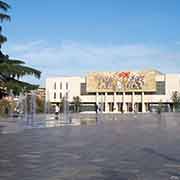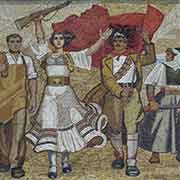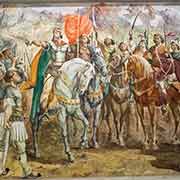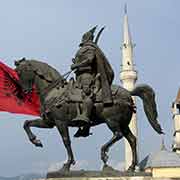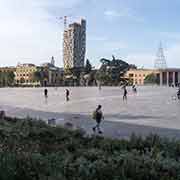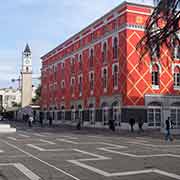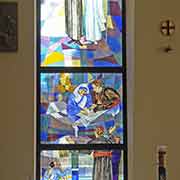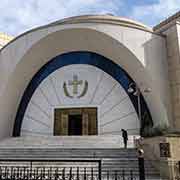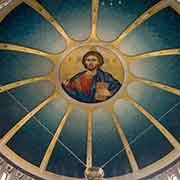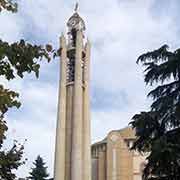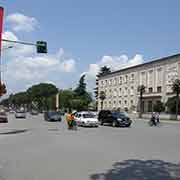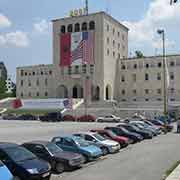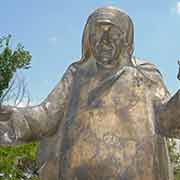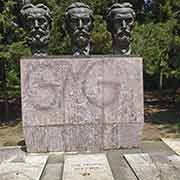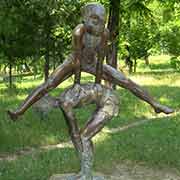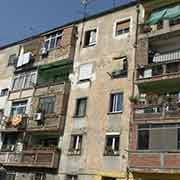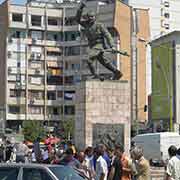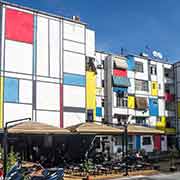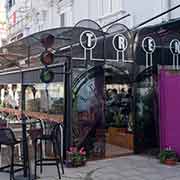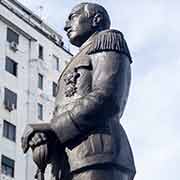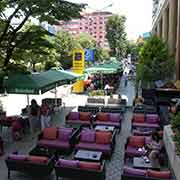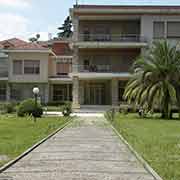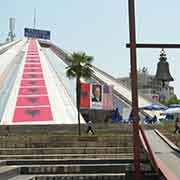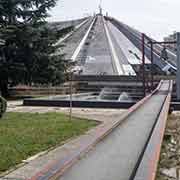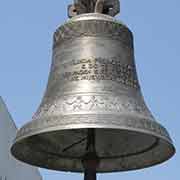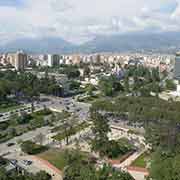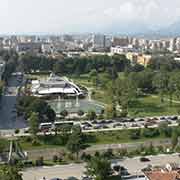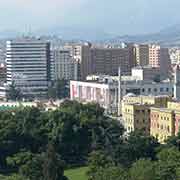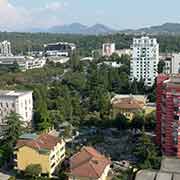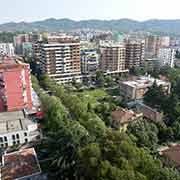Photos from Albania
Tirana, Albania’s capital
Tirana (or Tiranë in a sentence with a preposition) is Albania’s capital and largest city. It now has a population of about a million. It was probably founded in 1614 during the rule of Sulejman Pasha Bargjini, when a mosque, a hammam (Turkish bath), a bakery, and several shops were built. The Et’hem Bey mosque was built in 1789 and the Sahat-Kulla (Clock Tower) in 1830.
you may then send it as a postcard if you wish.
During the 19th Century, there was an awakening (“Rilindja”) of Albanian identity. The Albanian language was taught in schools in Tirana in 1889. On 26 November 1912, the people of Tirana hoisted the Albanian flag to end the rule of the Ottoman Turks. On 8 February 1920, the provisional government formed at the Congress of Lushje moved to Tirana, then a town of 7,000 inhabitants, and became the country’s capital. The Italians occupied Albania in 1939 and built several buildings for their administration and residence in Tirana during their rule. In November 1941, Enver Hoxha, with other Albanian Communists, founded the Communist Party of Albania here. The town became the centre of the Albanian Communists’ activities to mobilise its people to fight the Italian fascists and later Nazi Germans. Tirana was liberated on 17 November 1944 after a fierce battle against the German forces.
The city’s appearance has changed since World War II, with the old city quarters demolished; the old bazaar went in 1959. During the 1960s the city centre was improved, with a Cultural Palace and Theatre of Opera and Ballet built-in 1966. Skanderbeg’s equestrian statue was erected in 1968 on Skanderbeg Square (Sheshi Skënderbej) to replace Stalin’s statue. The fascinating National Museum of History is at the other end of the square with its socialist-realist mosaic on the front wall, the communist star now removed from the flag. Opposite the museum stood a 30 metres high bronze statue of Enver Hoxha; it was torn down on 21 February 1991 by a jubilant pro-democracy crowd. Tirana is now a very colourful city and quite a contrast with the drab grey place it was in communist times. Many of its Stalinist apartment blocks have now been painted in stunning colour. While in Socialist Albania, private car ownership was all but impossible, the city now has traffic jams. One of the strangest buildings is the Pyramid, which started as a museum dedicated to communist dictator Enver Hoxha; his daughter and son in law designed it. After the fall of communism, it became a convention centre but now seems derelict. Just in front of it hangs the Bell of Peace, forged from bullet cases collected by Albanian schoolchildren during the anarchy that gripped the country in 1997.
Blloku was the exclusive neighbourhood where the communist rulers lived; it was forbidden to mere citizens until 1991. Now it is a trendy neighbourhood with nightclubs and restaurants. The bungalow that was the residence of Enver Hoxha is still there, although not open to the public. The nearby Sky Club Panoramic Bar and Restaurant on the top floor of an office block gives a great view over Blloku and the rest of Tirana. On the southwestern part of the city, at the end of the wide Bulevardi Dëshmorët e Kombit is the University of Tirana. Behind the University is Parku Kombëtar, with a memorial for British servicemen who died in the Second World War. Another memorial honour the Frashëri brothers (Abdul, Naim and Sami), who were the driving force behind the Rilindja Kombëtarë, the Albanian National Renaissance movement at the end of the 19th Century.


